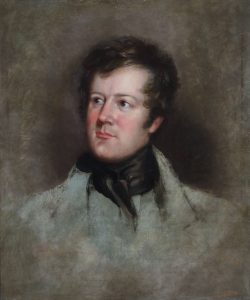
“The pale faces are masters of the earth… My day has been too long. In the morning I saw the sons of Unamis happy and strong; and yet, before the night has come, have I lived to see the last warrior of the wise race of the Mohicans.” (Cooper, James Fenimore. Last of the Mohicans.)
Inspiration for the formation of Giants of the Earth Heritage Center came partially from the insight of Ole Rölvaag, notably his book Giants in the Earth: A Saga of the Prairie. Rölvaag’s works elaborated on the wisdom he had gleaned, not only from his fellow Norwegians, but even more so from his eclectic reading which cultivated his reverence for the most insightful world authors available to him.
“In place of education was the reading–for this was a reading family. The precinct had a good library, furnished by the state. Rölvaag had learned to read after a long struggle, and his head was always in a book. The first novel he ever read was Cooper’s The Last of the Mohicans in the Norwegian. All of Cooper’s novels followed…” (Rölvaag, O.E., Giants in the Earth: A Saga of the Prairie. Introduction by Lincoln Colcord, II).
Colcord further states in his introduction to Giants in the Earth that Rölvaag even read aloud the works of Cooper to his fellow fisherman during the long winter months. The influence of Cooper on Rölvaag was profound, no doubt causing him to think forward in time and ask himself how long will it be before one of his own descendants declares, like Chingachgook: “I am Ole, last of the Norwegians.”
Rölvaag’s work also illustrates the inevitability of tragedy when people with little multigenerational stewardship understanding are allowed too much conditioning power within their community. The dogmatic beliefs that arise from the small-minded culture they create conditions in us a stubbornness in the defense of things of little existential import. When raised within such a community we can become blinded by habituation and the comforting idols of our tribe so that we become unable to use our own freedom for poetically being in the world to adjust to new stewardship realities. If we do transcend the myopia, without support it is difficult to follow through on our visionary projects because, inevitably, we will be unable to find support for smashing the idols of the tribe from within the tribe’s flock. Therefore we must unite with those magnanimous others, others likely not even of our tribe, who also transcend their own tribe’s idols. We learn much about picking our battles and our friends from Rölvaag, just as he had from Cooper. We learn from him and numerous other great thinkers that much that was noble has been lost, just as Chingachgook tells Hawkeye in the movie scene below. We also learn, however, that much can abide if we do not lose vigilance in the defense of a culture that empowers the poetic possibilities of humanity.
Chingachgook: The frontier moves with the sun and pushes the Red Man of these wilderness forests in front of it until one day there will be nowhere left. Then our race will be no more, or be not us.
Hawkeye: That is my father’s sadness talking.
Chingachgook: No, it is true. The frontier place is for people like my white son and his woman and their children. And one day there will be no more frontier. And men like you will go too, like the Mohicans. And new people will come, work, struggle. Some will make their life. But once, we were here.
